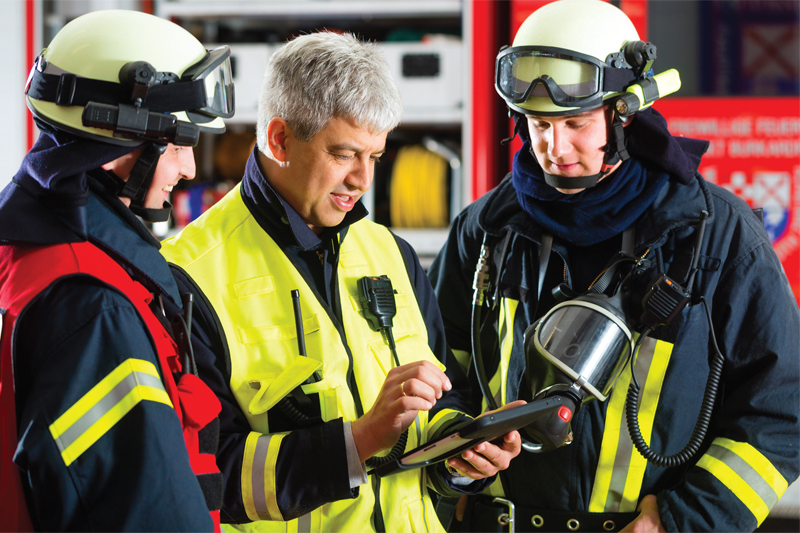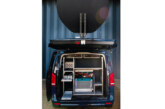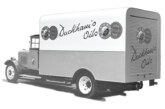
Emergency service vehicles make heavy demands on their batteries. CVW finds out how upgrading to Odyssey batteries with Thin Plate Pure Lead (TPPL) technology from EnerSys benefitted the fire engines operating out of a North West England Fire Service workshop.
The fire service investigated whether EnerSys could provide a better solution with TPPL battery technology when existing batteries began to fail regularly. Each fire engine used four 850 Cold Cranking Amps (CCA), 142 ampere hour (Ah) capacity batteries, wired in series-parallel, with two for starting, and two to power the auxiliary load.
However, problems arose because all four batteries – which had to be of the same type, as they shared a single charging circuit – were starter rather than cyclic products. Yet, auxiliary batteries often became deeply discharged, and, in extreme cases, entirely drained of energy, during callouts. The starter batteries then had to take over the auxiliary load, so they needed recharging from the vehicle’s engine to ensure a reliable restart.
The automatic deep-discharge prevention cut-off was often overridden by the callout’s senior officer. The problem was exacerbated when the batteries were not recharged by a shoreline charger back at the depot.
Premature failures
Accordingly, many conventional automotive batteries were failing after just three months, often with a voltage of 8V, well below 100% discharged. All four batteries were always exchanged simultaneously.
EnerSys TPPL solution
The solution delivered by EnerSys comprised four dual-purpose deep-cycle Odyssey 31-PC2150S TPPL batteries, wired in series-parallel like their predecessors. These were installed into a technical rescue unit (TRU), which experienced the most arduous operating conditions and, accordingly, suffered regular battery failures. The batteries were rated at 1,150CCA, 100Ah capacity. Although considerably lower than the 142Ah of the original units, the new batteries’ deep-discharge capabilities provided more than enough capacity.
A new level of reliability
Following installation, the batteries ran for three years without a problem, though sometimes subjected to a 50% or 75%, or occasionally even over 100%, depth of discharge. This high reliability was surprising considering the vehicle’s lengthy callouts. Such treatment can irreparably damage conventional batteries, but the Odyssey batteries recovered easily with their next charge.
Battery monitoring service
While this clearly demonstrated the batteries’ benefits, the fire service wanted deeper insight into their behaviour and application. Accordingly, they used the battery monitoring service EnerSys offers its customers. This comprises a battery-mounted data logger to record the discharge or recharge voltage, current and ambient temperature every two minutes.
Monthly feedback revealed no issues. However, after six months, the depot charger profile was amended slightly. This accommodated the batteries’ higher charge acceptance, and improved performance further.
Batteries that can outlast an application
The batteries were only removed from service because the TRU hosting them was retired. This means their full life potential is unknown. Although trouble-free operation for three years was the key benefit, the TPPL technology offered additional features such as fast charging. This meant that the batteries could often be recharged by the vehicle engine during transit.
Odyssey batteries’ concentrated energy storage and greater capacity not only provided longer lasting support for the crew’s auxiliary equipment; they also assured multiple engine starts under all conditions. Extra capacity is complemented by deep-cycle technology, which allows over 30% greater depth of discharge than any other comparable battery, so recharging intervals are far longer. This significantly reduces the need for engine idling, saving fuel and reducing carbon emissions.
Further benefits
The batteries can also be stored on open circuit without recharging for up to two years, compared with six months for an alternative. Their service life, which is claimed to far exceed any comparable battery, can extend to 400 charge-discharge cycles at up to 80% depth of discharge.
Vehicle and component life are also lengthened, with reduced maintenance requirements and mechanical stress. This is because the batteries supply optimum, stable voltages as required by modern electro-mechanical systems for far longer than any comparable types. The batteries are also resilient to environmental challenges.
Conclusion
This case study has highlighted how Odyssey batteries, through their advanced TPPL technology, provide a depth of power and endurance not available from their conventional VRLA equivalents. The batteries will support multiple auxiliary devices throughout a callout, and still start the vehicle engine reliably. Switching to this range appears to yield significant cost savings, as they are reported to endure for years before needing replacement; this eliminates the failures after as little as three months’ service, as experienced by the case study’s VRLA users.








